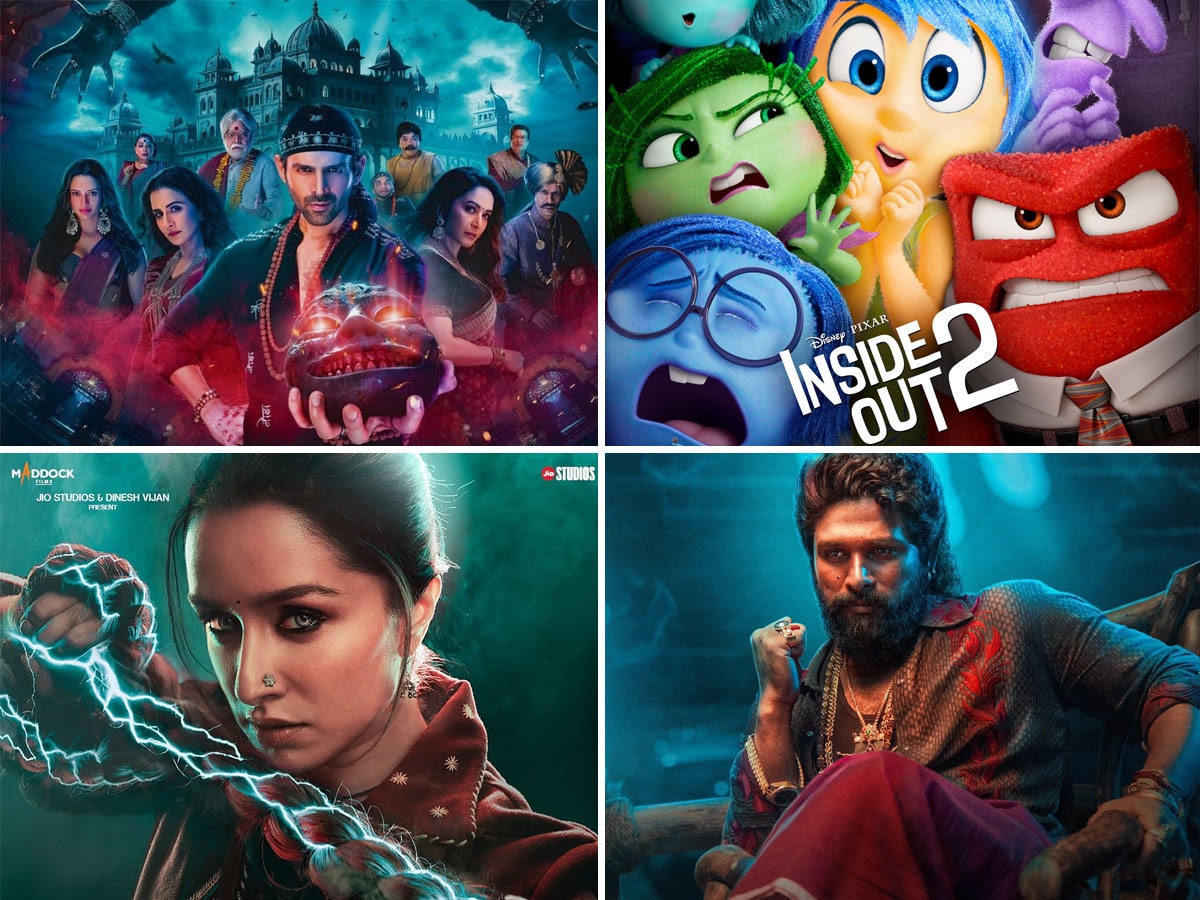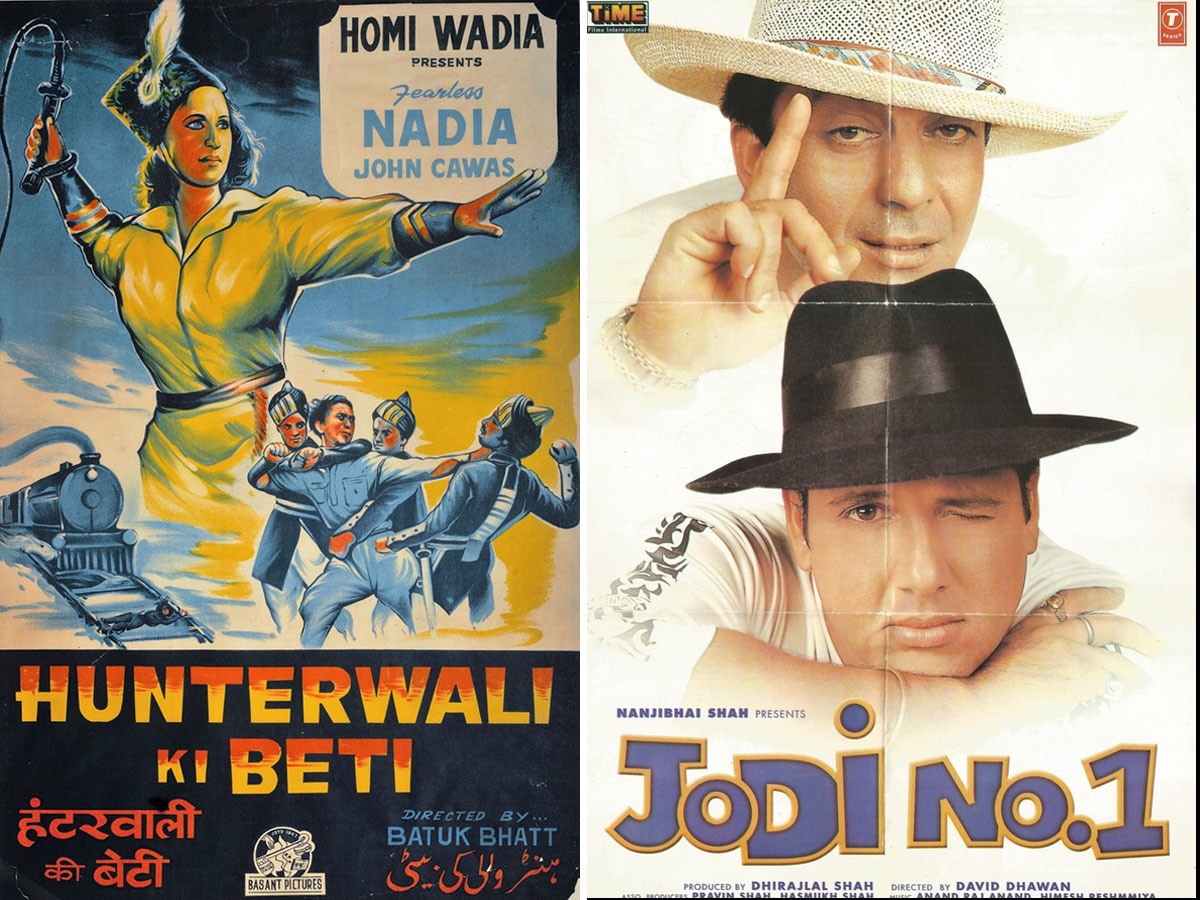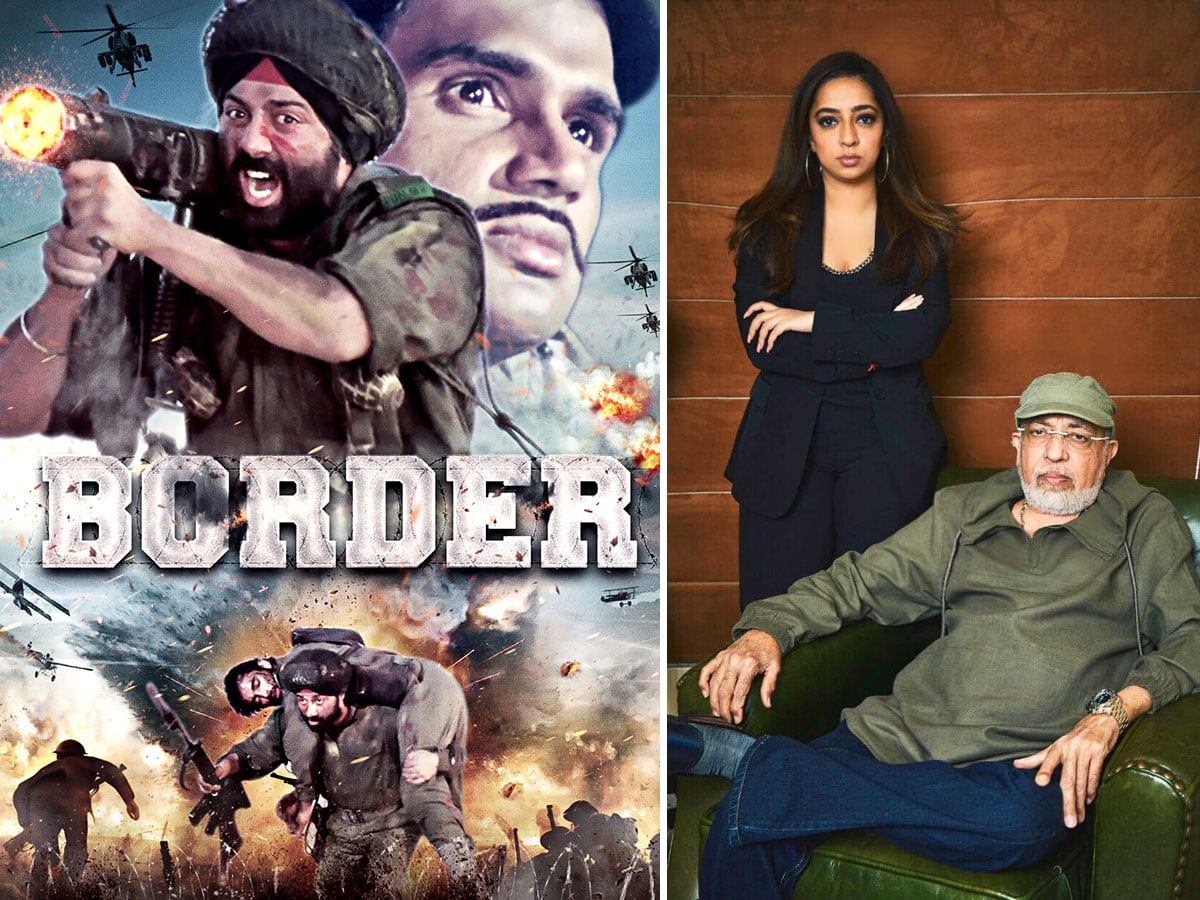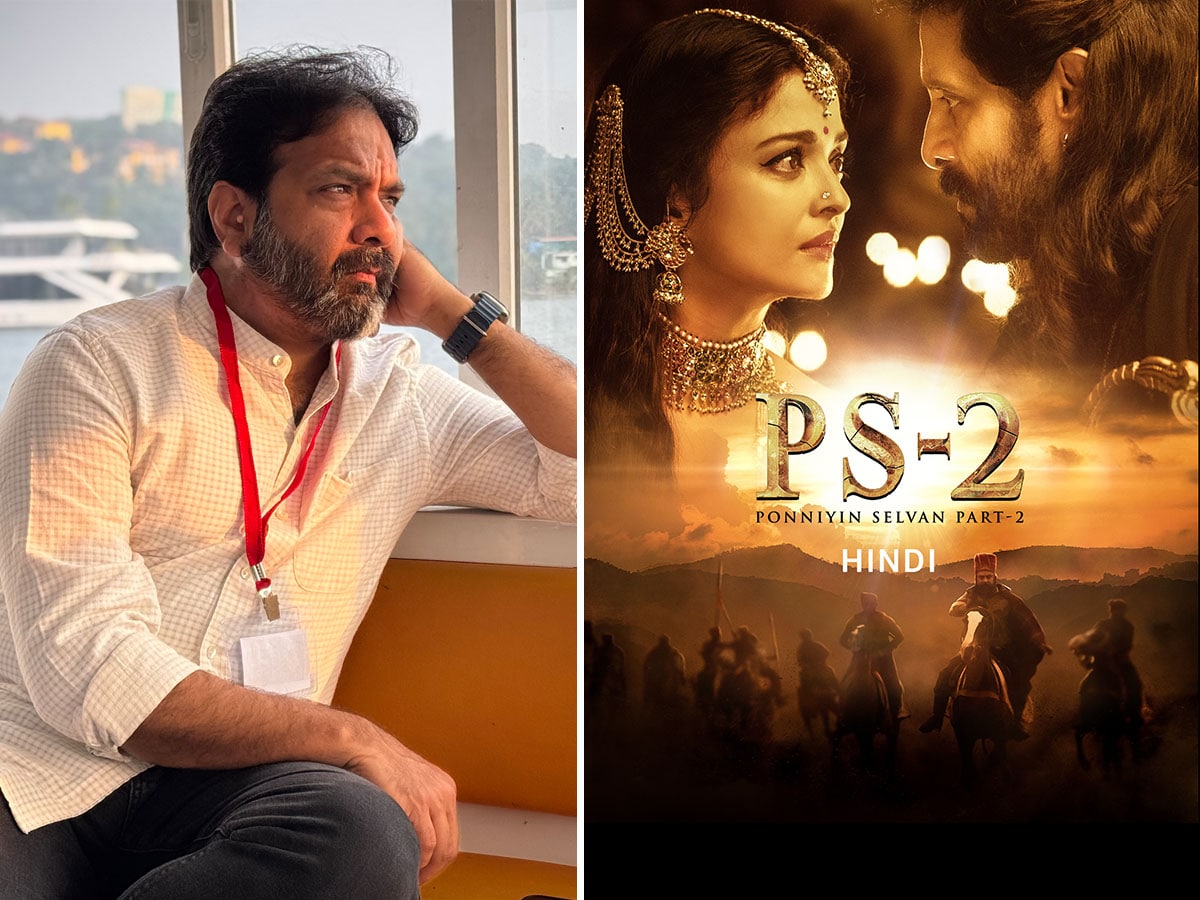 Money spinning franchises (clockwise from above left) Kartik Aaryan in Bhool Bhulaiyaa 3; US’ highest grossing Inside Out 2; Allu Arjun in Pushpa 2Shraddha Kapoor in Stree 2.
Money spinning franchises (clockwise from above left) Kartik Aaryan in Bhool Bhulaiyaa 3; US’ highest grossing Inside Out 2; Allu Arjun in Pushpa 2Shraddha Kapoor in Stree 2.
A number of top Indian filmmakers and producers are increasingly gravitating towards building film franchises as it seems like a sure shot way to attract theatrical audiences and generate revenue.
Currently, close to 15 sequels are reportedly in different development stages in the Hindi film market. These include Yash Raj Films’ Alpha, a new movie starring Alia Bhatt and Sharvari Wagh in the YRF Spy Universe, Border 2, featuring Sunny Deol and Diljit Dosanjh, and Nadiadwala Grandson Entertainment’s Housefull 5.
Prominent non-Hindi language film ecosystems are also witnessing franchise and sequel creation. Tamil features such as Rajnikanth-starrer Jailer 2, and Kamal Hassan’s Indian 3 are expected to release this year.
Mythological science fiction Kalki 2898 AD’ s second part, Jai Hanuman, a sequel to surprise 2024 Telugu hit Hanu-man, and Kantara 2, from breakout Kannada hit Kantara (2022), are other upcoming sequels currently being produced.
Writing-directing duo Pushkar AKS and Gayatri S have also been developing a film story for at least the last four years that has “legs” to become a two-part film or even a trilogy. The husband-wife duo predominantly creates shows (Suzhal: The Vortex) and films (Vikram Vedha) in Tamil.
“Making movie franchises is a trend that is here to stay,” Siddharth Roy Kapur, chairperson, Roy Kapur Films, told Forbes India in an earlier interaction in 2024. A sequel to a film that found financial and box office success in the past is an easy sell, Roy Kapur adds.
 The 1943 release Hunterwali ki Beti was an early successful sequel ; Actor Govinda starred in six films with No.1 in film titles, a form of incidental franchises
The 1943 release Hunterwali ki Beti was an early successful sequel ; Actor Govinda starred in six films with No.1 in film titles, a form of incidental franchises
A Hit at the Box Office
Several films that generated cash at the Indian box office in 2024 have either been a sequel or a franchise film. These include Allu Arjun-starrer Pushpa 2: The Rule, mythological science fiction Kalki 2898 AD, and Stree 2, featuring Shraddha Kapoor.
Originally made in Telugu, Pushpa 2’s reported worldwide gross stands close to Rs 1,800 crore, followed by Kalki at Rs 1,042 crore, according to Sacnilk, a Rajasthan- based data technology firm.
Out of about 84 theatrically released Hindi films in 2024, top box office grossers reportedly include Stree 2 and Bhool Bhulaiyaa 3. While Stree 2 collected over Rs 500 crore, the latter, featuring Kartik Aaryan, grossed more than Rs 300 crore, according to the Ormax Media report.
Pushpa 2 emerged as the biggest box office cash generator among Hindi films as well, grossing Rs 1,403 crore, adds the report.
Also read: From 1942 to 2025: Manisha Koirala’s love story with Bollywood continues
Audiences’ fast evolving viewing habits have left film studios globally relying more on sequels, reboots and spin-offs for theatrical ticket sales. In the US, Disney’s Inside Out 2 became the highest grossing theatrical release last year earning $652 million in total gross, followed by Deadpool & Wolverine ($636 million), and Ariana Grande-starrer Wicked ($468 million), according to data on Box Office Mojo.
Out of the top 30 highest grossing domestic releases, more than 20 films were from a movie franchise. A few other lucrative English language series include Warner Brothers Discovery’s Harry Potter franchise and Illumination’s Despicable Me. These franchises continue to attract massive box office revenues by selling licensed consumer products, digital games, and series creation.
But unlike the Western film ecosystem, which has over dozens of cash conjuring franchises, Indian studios have only recently started taking franchise building seriously.
“We are as such quite late to the party when it comes to creating scripts that can delve itself into multiple extensions,” says Milind Rau, creator of Tamil horror thriller television series The Village on Amazon Prime Video.
Even though Indian studios might be late, they are here at an opportune time. Due to watching season-format shows on streaming platforms and following franchises such as the Marvel Cinematic Universe (MCU), viewers across the country are ready to dive into expansive narratives.
People are open to following storylines that transcend across multiple films, shows and other entertainment verticals, adds Rau, who has also been an assistant director on Mani Ratnam-directorial Guru (2007) and Yuva (2004).
If filmmakers play their cards well, the accelerated attempts at franchise creation could help give the Indian film industry a monetary boost. But short-sighted strategies including conjuring old titles and turning them into franchises with new storylines might not be the best way forward. Extensive world building and increased resources need to be accessed to develop quality stories, and planned films and spin-offs could reap better results.
 The poster of the 1997 war film Border, written, produced and directed by JP Dutta. Border 2, currently being shot, is produced by Nidhi Dutta, seen here with father J P Dutta.
The poster of the 1997 war film Border, written, produced and directed by JP Dutta. Border 2, currently being shot, is produced by Nidhi Dutta, seen here with father J P Dutta.
A Different Approach
The first film needs to leave a lasting imprint on a viewer’s mind so they eagerly wait for the next instalment. “There is so much to watch and get entertained in current times. If you do not make your story and characters fresh then it only takes mere days for the audience to forget a film,” says Kethireddy Sasidhar, distributor, Mythri Movie Distributors LLP.
And the first film’s story needs to be expansive enough to lend itself to sequels or spin-offs. When a film’s world is built with intricate details including backstory to characters, a few loose plot threads and a premise that makes viewers care for protagonists, that is when its sequel has a chance of becoming a success at the box office, adds Kethireddy.
Besides, unless a film’s story and presentation strike a chord with viewers, there is no way a filmmaker can find financial backing for the next instalment. “The first thought should always be about the story. Someone cannot think about the business plan on a film without putting all the necessary effort in the standalone movie,” says Siva Ananth, executive producer, Madras Talkies.
The Chennai-based production house produced historical action films Ponniyin Selvan 1 and 2 (2022-2023). The first instalment itself reportedly grossed more than Rs 450 crore becoming a lucrative Tamil venture.
Also read: Imtiaz Ali: The master brewer of timeless tales
Though for Ananth, “Making Ponniyin Selvan into two parts was a creative decision and not a business decision.” The Mani Ratnam-directed historical epic was based on a fiction novel of the same name that has five volumes. “The source material was so vast that we could not have done justice to the story in a three-hour film,” he adds.
In recent years, two-part movies such as action-fantasy Baahubali: The Beginning (2015) and Baahubali 2: The Conclusion (2017), and the Ponniyin Selvan films have broken box office records. Such films were also planned to be made in two parts, which also helps in building efficient pre-production processes.
“When you know a story is continuing across films then planning for locations, getting shooting dates from the cast, and finalising crew members’ work duration, among many other aspects, becomes easier,” says Rau.
 Siva Ananth, executive producer of Madras Talkies, the Chennai-based production house that produced Ponniyin Selvan 1 and 2 ; the poster of Ponniyin Selvan 2
Siva Ananth, executive producer of Madras Talkies, the Chennai-based production house that produced Ponniyin Selvan 1 and 2 ; the poster of Ponniyin Selvan 2
Incidental Franchise Creations
It is not as if sequels have not been made in India before. In fact, creating sequels in the Indian film ecosystem can be traced back to 1943, when producer Homi Wadia released Hunterwali Ki Beti, a sequel that was released eight years after Hunterwali’s release in 1935.
Fast forward to the 1990s, and movies would have a lead actor and the title consistent across films. For instance, between 1995 and 2001 actor Govinda, who majorly acted in Hindi films, starred in six films with No.1 in film titles including Coolie No.1, Jodi No. 1 and Aunty No.1. These formed incidental franchises due to an actor’s and a title’s popularity.
“Franchises in the past were not really planned. Such films got made because a certain film worked (financially). The lead character and the actor playing it were probably entrenched in people’s minds,” says a top Hindi film and series producer who wished to remain anonymous.
However, the following films in the franchise would be standalone films with their own storylines.
The trend is still going strong with the last two Bhool Bhulaiyaa films. Here, Aaryan and a few characters continue to play similar roles across films. But each movie has a different plotline operating in the horror-comedy genre.
Border 2, too, which is currently being shot, repeats Sunny Deol, from its first instalment Border that released more than 27 years ago but the storyline is different. “I wouldn’t call our film a sequel in the definition sense because it is a different story,” says Nidhi Dutta, producer, JP Films.
Like the first film, Border 2 also continues to be set during the India-Pakistan War in 1971. But with a new premise. “In 1971, multiple Indian Army units were fighting across many parts of India. So, while the movie is set in the same era the story is of a different battalion,” Dutta adds.
However, Rohit Shetty did get a foot in the door sooner. He followed up Singham (2011) starring Ajay Devgn with Singham Returns (2014), then Simmba (2018), Sooryavanshi (2021) and Singham Again (2024), all of them building a Cop Universe. Shetty has taken a page from the Marvel Cinematic Universe, where a standalone film or show sets up one or more new characters and then they are brought together in a film.
“The Singham franchise is character centric. Rohit (Shetty) is focusing more on bringing all the characters and their arcs together in a common storyline to create a much larger universe,” says Suparn Verma, owner, Andromeda Films Combine. Along with films, Verma has also directed streaming shows including The Trial and a few episodes of The Family Man.
Though as of now there is not much clarity on new films for the Cop Universe, it is something that was spun off in other ways too—Indian Police Force, released in January 2024 on Amazon Prime Video, is a spin-off series set in the same world.
But as Hindi filmmakers and producers continue to revive and stay dependent on old titles, harping on nostalgia, the Hindi film ecosystem continues to struggle to sell tickets. Apart from two films, hardly any other Hindi movie franchise has a significant cost to profit ratio in 2024. Made on a reported budget of over Rs 350 crore, Singham Again’ s worldwide box office collection stood at Rs 372 crore, according to Sacnilk.
Among Telugu movie franchises, Pushpa 2’s Hindi dubbed version alone collected Rs 889 crore, which also contributed to Hindi film industry’s declining gross box office collections. Pushpa 2 was reportedly made on a budget of more than Rs 400 crore.
Hindi cinema’s collections dropped to Rs 4,679 crore in 2024 from Rs 5,380 crore in 2023. In February 2024, Forbes India published a detailed analysis on the threat of the Hindi film industry shrinking while other language film ecosystems got an opportunity to flourish.
Tamil and Telugu cinema’s box office share saw a marginal change, and also contributed 31 percent to the Hindi box office through dubbed versions. Malayalam cinema, on the other hand, doubled its box office share to 10 percent in 2024 from 5 percent in 2023, with Gujarati cinema’s share shooting up to 66 percent year-on-year, adds the Ormax Report.
But the Hindi mainstream film ecosystem is also the most developed of all the other Indian language movie industries and developing universes and worlds, and proper franchises, might just give it the boost it needs.
